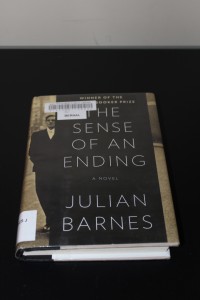The classic whose title has come to represent book burning and censorship, started out as a short story called “The Fireman”. Soon it was expanded into a 167 page novel, and subsequently made into a radio drama, stage play, and movie. Although the public has associated it with government sponsored censorship, the author, Ray Bradbury, has stated that it is not so much about state censorship, but about individuals shrinking away from challenging, thought-provoking works of art to settle for the lowest common denominator of mindless entertainment. As he puts it in the story through the character of the fire chief: “‘School is shortened, discipline relaxed, philosophies, histories, languages dropped, English and spelling gradually gradually [sic] neglected, finally almost completely ignored. Life is immediate, the job counts, pleasure lies all about after work. Why learn anything save pressing buttons, pulling switches, fitting nuts and bolts?'” Later, he says: “There was no dictum, no declaration, no censorship, to start with, no! Technology, mass exploitation, and minority pressure carried the trick, thank God.” Eventually the government does get involved and declares books illegal and employs firemen to burn any books that are reported. Aside from the reasons given in the story and Bradbury’s interview account, history seems to be full of government sponsored censorship, including book burnings of which there is a long list of on Wikipedia. Whatever the source of the curtailment of ideas and critical thinking, “Fahrenheit 451” has resonated with a wide audience the last sixty some years since its first appearance.
For an amusing and well done summary and analysis of “Fahrenheit 415” please see the video below:
Here is a look at the trailer of the 1966 Francois Truffaut film version:
Bill Sargeant


